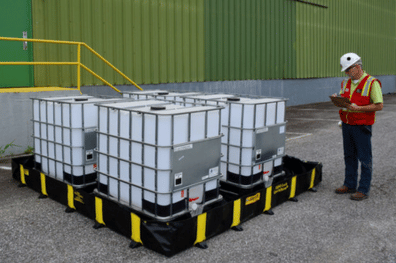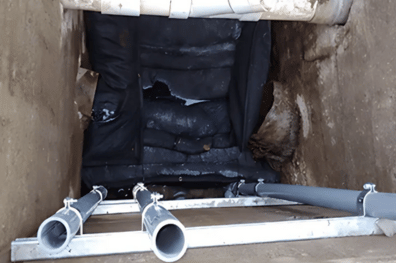A comprehensive 26-week study at a Midwest airport has demonstrated exceptional success in treating highly concentrated PFAS contamination through an innovative combination of technologies.
The Challenge
The site presented extreme contamination levels:
- Total PFAS: 33,142,900 ng/L
- Source: Fire truck rinse water containing firefighting foam
- Multiple PFAS chain lengths present
- Need for complete degradation
The Solution: Comparative Treatment Study
The team implemented two treatment strategies across four totes:
- Combined Treatment (Totes 1, 3, and 4):
- BAM Ultra technology
- PFAS-degrading bacteria
- Aerobic conditions
- Bacteria Only (Tote 2):
- PFAS-degrading bacteria
- No BAM addition
- Control comparison
Timeline of Results
The study revealed distinct treatment patterns:
Week 1:
- Sharp decrease in large-chain PFAS
- Immediate treatment response
Week 9:
- Temporary PFAS increase in bacteria-only tote
- Demonstrated breakdown of long-chain to short-chain PFAS
Week 15:
- Large-chain PFAS: non-detectable
- Short-chain PFAS: beginning significant reduction
- Combined treatment showing superior results
Week 26:
- Near non-detectable levels for all PFAS
- Complete treatment success
- Validated long-term effectiveness
Key Scientific Findings
The study revealed several crucial insights:
- Treatment Mechanisms:
- BAM absorbs PFAS compounds
- Bacteria break down long chains to short chains
- Combined approach prevents concentration spikes
- Synergistic Effects:
- BAM promotes bacterial growth
- Enhanced degradation rates
- More stable treatment process
Innovation Highlights
The project demonstrated several breakthrough concepts:
- Successful treatment of extremely high PFAS concentrations
- Documented PFAS degradation pathway
- Proven benefits of combined treatment approach
- Long-term effectiveness validation
Practical Applications
This study provides valuable insights for:
- Airport PFAS treatment programs
- Firefighting waste management
- High-concentration PFAS remediation
- Treatment technology selection
Future Implications
The success of this study offers:
- Validated treatment methodology
- Understanding of degradation processes
- Optimization strategies for PFAS treatment
- Framework for similar applications
This groundbreaking research provides a clear roadmap for treating high-concentration PFAS contamination, particularly from firefighting activities.



